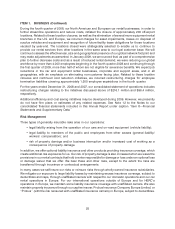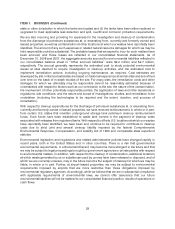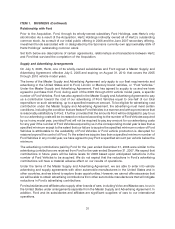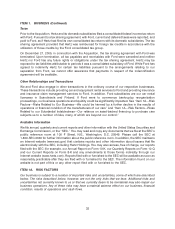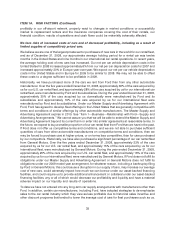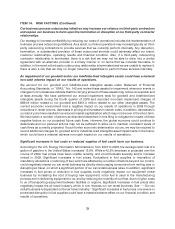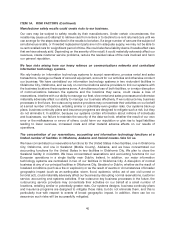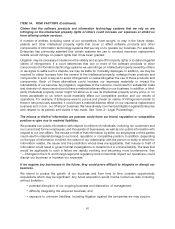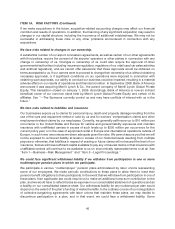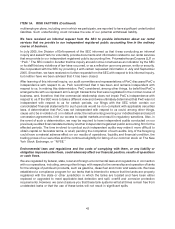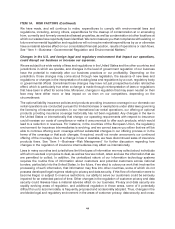Hertz 2008 Annual Report Download - page 54
Download and view the complete annual report
Please find page 54 of the 2008 Hertz annual report below. You can navigate through the pages in the report by either clicking on the pages listed below, or by using the keyword search tool below to find specific information within the annual report.ITEM 1A. RISK FACTORS (Continued)
travel and have a material adverse effect on our results of operations. Certain airlines have recently
announced but not yet implemented capacity reductions in 2009. In addition, any event that disrupts or
reduces business or leisure air travel could have a material adverse effect on our results of operations. In
particular, deterioration in the economic condition of U.S. and international airlines could exacerbate
reductions in air travel. Other events that impact air travel could include work stoppages, military
conflicts, terrorist incidents, natural disasters, epidemic diseases, or the response of governments to any
of these events. For example, shortly before the September 11, 2001 terrorist attacks, we estimated that
we would earn a pre-tax profit of approximately $250 million in 2001; by contrast, our actual pre-tax profit
for 2001 was only approximately $3 million, and we continued to feel the adverse effects of the attacks
well into the following year. On a smaller scale, the 2003 outbreak of Severe Acute Respiratory
Syndrome, or ‘‘SARS,’’ in the Toronto, Canada area and parts of Asia, significantly reduced our 2003
results of operations in Canada. The United States and international markets are currently experiencing
a significant decline in economic activities, including a tightening of the credit markets, reduced airline
passenger traffic, reduced consumer spending and volatile fuel prices. During 2008, this resulted in a
rapid decline in the volume of car rental and equipment rental transactions, an increase in depreciation
and fleet related costs as a percentage of revenue, lower industry pricing and lower residual values for
the non-program cars and equipment that we sold.
Our business is highly seasonal.
Certain significant components of our expenses, including minimum concession fees, real estate taxes,
rent, insurance, utilities, maintenance and other facility-related expenses, the costs of operating our
information technology systems and minimum staffing costs, are fixed in the short-run. Seasonal
changes in our revenues do not alter those fixed expenses, typically resulting in higher profitability in
periods when our revenues are higher and lower profitability in periods when our revenues are lower.
The second and third quarters of the year have historically been our strongest quarters due to their
increased levels of leisure travel and construction activity. Any occurrence that disrupts rental activity
during the second or third quarters could have a disproportionately material adverse effect on our
liquidity and/or results of operations. See ‘‘Item 7—Management’s Discussion and Analysis of Financial
Condition and Results of Operations—Liquidity and Capital Resources.’’
We may not be successful in our business strategy to expand into the off-airport rental market.
We have been increasing our presence in the off-airport car rental market in the United States. We intend
to pursue profitable growth opportunities in the off-airport market. We expect to do this through a
combination of selected new location openings, a disciplined evaluation of existing locations and the
pursuit of same-store sales growth. In order to increase revenues at our existing and any new off-airport
locations, we will need to successfully market to insurance companies and other companies that provide
rental referrals to those needing cars while their vehicles are being repaired or are temporarily
unavailable for other reasons, as well as to the renters themselves. This could involve a significant
number of additional off-airport locations or strategic changes with respect to our existing locations. We
incur minimal non-fleet costs in opening our new off-airport locations, but new off-airport locations, once
opened, take time to generate their full potential revenues. As a result, revenues at new locations do not
initially cover their start-up costs and often do not, for some time, cover the costs of their ongoing
operation. See ‘‘Item 1—Business—Worldwide Car Rental—Operations.’’ In addition, if airline
passenger traffic continues to decrease, our competitors, some of which have greater market share than
we do in the off-airport rental market, may also try to increase their presence in that market, which could
make it more difficult for this business strategy to succeed. The full results of this strategy and the
success of our execution of this strategy will not be known for a number of years. If we are unable to grow
34



